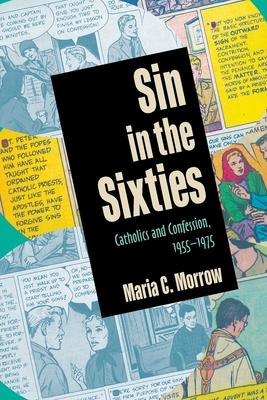Confession reached its peak attendance in the early 1950s, but by the end of the Second Vatican Council, the popularity of the sacrament plummeted. While this decline is often noted by historians, theologians, priests, and laity alike-all eager to provide possible explanations-little attention has been paid to another dramatic shift. Coincident with the decreasing popularity of the sacrament of penance in the United States were changes to non-sacramental penitential practices, including Lenten fasting, Ember Days, and the year-round Friday meat abstinence. American Catholics-sometimes derisively called Fisheaters-had assiduously observed Friday abstinence, regardless of ethnicity or geographic location. In 1966, the bishops in the United States released a statement implementing Pope Paul VI’s apostolic constitution on penance. Eating meat on Friday transformed from being a mortal sin to not being regarded as sinful at all. This apparently overnight change to one of the most long-standing practices, one that could be used to identify Catholics in the U.S., confused many of the faithful and resulted in Fridays becoming just another day. The decline of the sacrament is best seen within the context of the decline of a larger penitential culture among American Catholics, and both are best understood in reference to the changing notion of sin at this time period. Sin became a more abstract, general concept, contrasting sharply with the actual and personal "shopping list" of sins that the faithful had frequently enumerated in earlier decades. Accompanying this change in the perception of sin were criticisms of the practice of penance, and both sacramental and non-sacramental penance were found wanting as both legalistic and superficial. The attempts to revitalize penance through greater choice-whether in the confessional or on Fridays-actually furthered the decline in American penitential practice. For some, penitential practices are the buried treasure of the church that await rediscovery. For others, they were experiences that had to be endured and that are best forgotten. Morrow, in a thoughtful, even-handed way, traces how the perception and emphasis changed during this critical and controversial time in the church’s history.
| FindBook |
有 1 項符合
Sin in the Sixties: Catholics and Confession 1955-1975的圖書 |
 |
Sin in the Sixties: Catholics and Confession 1955-1975 作者:Morrow 出版社:Catholic University of America Press 出版日期:2016-11-18 語言:英文 規格:平裝 / 336頁 / 普通級/ 初版 |
| 圖書館借閱 |
| 國家圖書館 | 全國圖書書目資訊網 | 國立公共資訊圖書館 | 電子書服務平台 | MetaCat 跨館整合查詢 |
| 臺北市立圖書館 | 新北市立圖書館 | 基隆市公共圖書館 | 桃園市立圖書館 | 新竹縣公共圖書館 |
| 苗栗縣立圖書館 | 臺中市立圖書館 | 彰化縣公共圖書館 | 南投縣文化局 | 雲林縣公共圖書館 |
| 嘉義縣圖書館 | 臺南市立圖書館 | 高雄市立圖書館 | 屏東縣公共圖書館 | 宜蘭縣公共圖書館 |
| 花蓮縣文化局 | 臺東縣文化處 |
|
|
圖書介紹 - 資料來源:博客來 評分:
圖書名稱:Sin in the Sixties: Catholics and Confession 1955-1975
|









